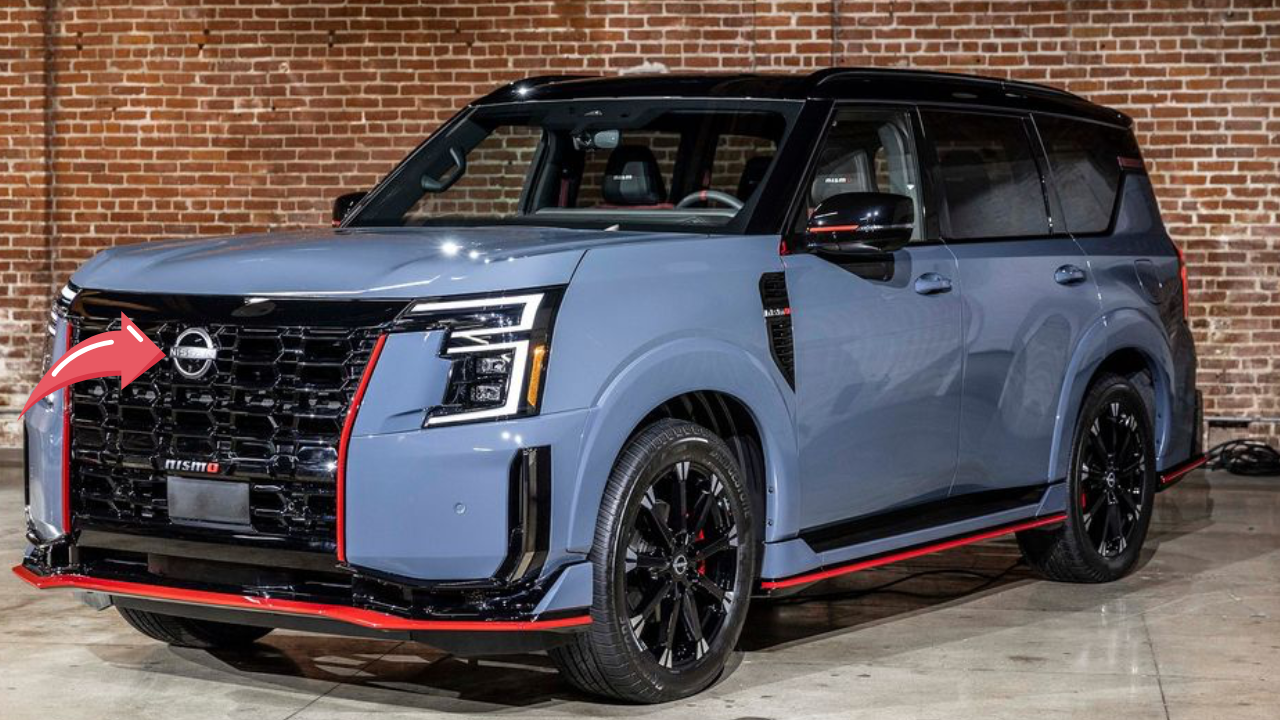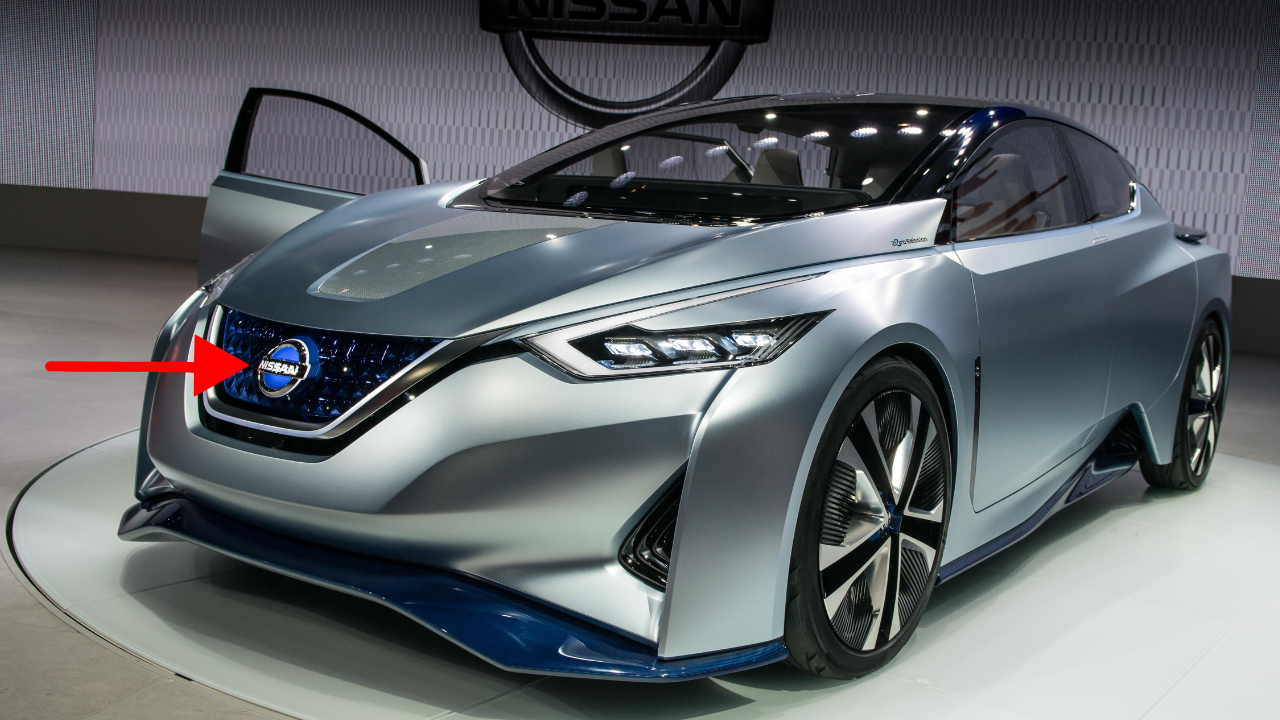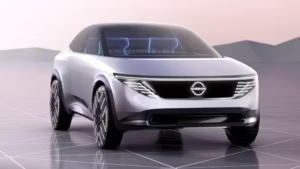Nissan has redefined its flagship full-size SUV with the introduction of the 2026 Nissan Armada NISMO, a performance-oriented variant that blends motorsport-inspired enhancements with the practicality of a three-row family hauler. Unveiled on June 24, 2025, this marks the first time Nissan’s NISMO division has brought its high-performance expertise to the Armada in the North American market, a move that positions it as a direct competitor to rivals like the Chevrolet Tahoe RST. With a retuned 460-horsepower twin-turbo V6, aggressive styling, and advanced handling upgrades, the Armada NISMO promises to inject excitement into a segment often associated with utility over thrills. This article explores the key features, design, performance, and market implications of this bold new addition to Nissan’s lineup, set to hit dealerships in Fall 2025.
A New Benchmark for the Armada Lineup
The Nissan Armada has long been a reliable choice for families, offering robust towing capacity, spacious interiors, and a rugged body-on-frame construction. For 2025, Nissan gave the Armada a comprehensive redesign, introducing modern styling, a luxurious Platinum Reserve trim, and enhanced technology. However, the 2026 model year sees Nissan pushing boundaries further by adding the NISMO trim, a performance-focused variant that elevates the Armada’s capabilities to unprecedented levels.
The NISMO, short for “Nissan Motorsport,” is synonymous with performance tuning, having previously enhanced models like the Nissan Z and GT-R. The Armada NISMO joins these iconic vehicles, bringing a sporty edge to the full-size SUV segment. Positioned between the off-road-oriented Pro-4X and the upscale Platinum Reserve trims, the NISMO variant caters to buyers seeking a blend of power, style, and practicality.
Powertrain: A Twin-Turbo V6 with NISMO Flair
At the heart of the 2026 Armada NISMO lies a retuned version of Nissan’s 3.5-liter twin-turbocharged V6 engine, delivering an impressive 460 horsepower—a 35-hp increase over other Armada trims and 40 hp more than the Chevrolet Tahoe’s 6.2L V8. This power boost, achieved through revised engine programming and fine-tuned valve clearances, requires premium fuel to unlock maximum performance, unlike other trims where it’s optional.
The engine is paired with a nine-speed automatic transmission, recalibrated for sharper shifts, ensuring responsive power delivery. Torque remains at 516 lb-ft, identical to other Armada variants, but the NISMO’s freer-flowing exhaust system adds a throatier, more aggressive note, reminiscent of the GT-R’s snarl. Active Sound Enhancement software further amplifies this auditory experience inside the cabin, appealing to enthusiasts craving a sportier vibe.
Despite its performance focus, the Armada NISMO retains the same 8,500-pound towing capacity as other trims, making it a versatile choice for buyers who need to haul trailers or boats without sacrificing power. With a 0-100 km/h time estimated around 6 seconds, it’s not a track star like the Cadillac Escalade-V, but it’s a significant step up for a vehicle weighing nearly 6,000 pounds.
Handling and Suspension: Tuned for Agility
The Armada NISMO isn’t just about straight-line speed; Nissan’s engineers have focused on improving its dynamics to make it more engaging to drive. The SUV features an Adaptive Electronic Air Suspension, borrowed from the Pro-4X and Platinum Reserve trims but tuned specifically for sportier handling. This system reduces suspension travel in Sport mode, lowering the ride height for better stability and responsiveness.
Recalibrated electric power steering enhances precision, while NISMO-tuned electronic dampers adjust in real-time to balance comfort and control. The Armada NISMO also rides on exclusive 22-inch forged aluminum wheels wrapped in high-performance all-season tires, improving grip and cornering performance. Red-painted brake calipers add a visual flair, though Nissan hasn’t disclosed specific brake upgrades.
These enhancements aim to address the typical drawbacks of body-on-frame SUVs, such as a high center of gravity and ponderous handling. While it’s unlikely to rival a sports car, the Armada NISMO promises a more planted and confident driving experience, particularly on winding roads or highways.
Exterior Design: Bold and Aggressive
The Armada NISMO’s styling is unmistakable, with a comprehensive makeover that screams performance. Nissan’s designers have equipped it with a unique body kit, including a redesigned front fascia with a massive grille, vertical air curtains, and a front lip for improved aerodynamics. Fender flares, side skirts, and a sporty rear spoiler enhance its aggressive stance, while LED fog lights and a lower rear bumper add functional flair.
Red accents are a hallmark of the NISMO trim, appearing on the grille, side splitters, and brake calipers. The SUV is available in exclusive colors like Stealth Gray (with or without a Super Black roof), Black Diamond Pearl, and Everest White Pearl Tricoat, further distinguishing it from other trims. Measuring 1.3 inches longer than standard Armadas due to its extended bodywork, the NISMO maintains the same 121.1-inch wheelbase.
The design has polarized opinions, with some praising its bold, tuner-inspired look and others finding the oversized grille and wide fender flares excessive. Regardless, it ensures the Armada NISMO stands out in a crowded segment, appealing to buyers who prioritize road presence.
Interior: Sporty Luxury with NISMO Touches
Inside, the Armada NISMO combines luxury with motorsport-inspired details. The cabin features quilted leather or Alcantara-style upholstery with red suede inserts, red stitching, and NISMO branding on the headrests, steering wheel, and floormats. Adjustable front-seat bolsters provide lateral support during spirited driving, while aluminum pedals and a red 12 o’clock stripe on the steering wheel add a racing vibe.
The NISMO trim includes Nissan’s dual 14.3-inch screen setup, with a dedicated suspension indicator display for real-time feedback. A 12-speaker Klipsch audio system, wireless Apple CarPlay, Android Auto, and Amazon Alexa integration come standard, ensuring a tech-rich experience. Multi-color ambient lighting enhances the premium feel, while massaging front seats—shared only with the Platinum Reserve—add a touch of luxury.
Seating for eight remains standard, maintaining the Armada’s family-friendly credentials. Cargo capacity is unchanged at 97.1 cubic feet, and the payload rating stays at 1,700 pounds, ensuring practicality isn’t compromised.
Comparison Table: 2026 Nissan Armada Trims
|
Trim |
Horsepower |
Key Features |
Starting Price (2025 Reference) |
Target Audience |
|---|---|---|---|---|
|
SV |
425 hp |
Base model, 3.5L V6, 8,500-lb towing, basic tech package |
$57,520 |
Budget-conscious families |
|
SL |
425 hp |
Mid-grade, Klipsch audio, dual 14.3-inch screens, leather upholstery |
$87,840 (Canada) |
Families seeking comfort |
|
Pro-4X |
425 hp |
Off-road focus, skid plates, Lava Red accents, all-terrain tires |
$73,740 |
Off-road enthusiasts |
|
NISMO |
460 hp |
Performance tune, adaptive air suspension, 22-inch wheels, NISMO styling |
~$77,000 (est.) |
Performance-oriented buyers |
|
Platinum Reserve |
425 hp |
Luxury focus, massaging seats, premium materials, chrome accents |
$76,990 |
Luxury-seeking families |
Market Positioning and Competition
The Armada NISMO enters a competitive segment where performance variants are gaining traction. Its primary rival, the Chevrolet Tahoe RST, offers 420 hp from a 6.2L V8, but the NISMO’s 460 hp and sportier tuning give it an edge. Other competitors, like the Ford Expedition Stealth Performance, focus on similar themes of power and aggressive styling, but Nissan’s motorsport pedigree lends the NISMO unique credibility.
Pricing for the Armada NISMO hasn’t been announced, but estimates place it around $77,000, aligning it between the Pro-4X ($73,740) and Platinum Reserve ($76,990) based on 2025 pricing. This positions it as a premium offering, though still more affordable than high-end rivals like the Cadillac Escalade-V, which starts well above $100,000.
Nissan’s decision to introduce the Armada NISMO reflects a broader industry trend of performance-focused SUVs, driven by consumer demand for vehicles that combine utility with excitement. The success of the Patrol NISMO in markets like the Middle East, where it’s offered with up to 495 hp, likely influenced this move. However, the North American NISMO’s slightly detuned 460-hp engine suggests a focus on balancing performance with fuel efficiency and emissions compliance.
Global Context and Future Prospects
The Armada NISMO is part of Nissan’s global Y63 platform, shared with the Patrol in other markets. In Australia, the Patrol NISMO’s potential arrival in 2027 has generated buzz, with a 495-hp variant already on sale in the Middle East. Nissan Australia has left the door open for a right-hand-drive version, hinting at broader global ambitions for the NISMO brand.
Looking ahead, the Armada NISMO could pave the way for more performance-oriented SUVs in Nissan’s lineup, especially as competitors continue to expand their high-performance offerings. Its combination of power, styling, and utility makes it a compelling choice for buyers who want a full-size SUV that stands out from the crowd.
Looking Forward
The 2026 Nissan Armada NISMO is a bold statement from Nissan, transforming its flagship SUV into a performance powerhouse. With 460 horsepower, NISMO-tuned suspension, and aggressive styling, it offers a unique blend of sportiness and practicality in a segment often dominated by conservatism. While its polarizing design and premium price may not appeal to everyone, it’s a refreshing addition for enthusiasts seeking a full-size SUV with attitude. Set to arrive in dealerships this fall, the Armada NISMO is poised to make waves, proving that even the largest SUVs can have a sporty soul.


